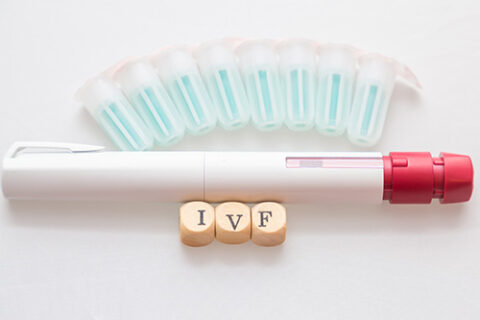To increase the quality of the sperm and the egg that will be used for the treatment, patients are advised to lose weight, quit smoking, and treat their other health issues. If the male hormone levels are low in our female patients, to increase the quality and number of eggs we are recommending the usage of androgen hormone (DHEA, TESTOGEL) for a couple of months. For patients with unstable blood sugar levels, medications targeting insulin (myoinositol, metformin) could be administered to enhance the quality of the egg and endometrium. In the cases of male infertility, hormonal treatments, quitting smoking, and antioxidant treatment could be used to improve sperm quality.
Practices that increase the success rate of the IVF treatment
In Case of Emergency Call +90 (535) 743-6054
- CONTACT US


Practices for the patients
Practices before the IVF treatment
30% of the patients who were told to be normal during their prior examinations actually experience uterine cavity issues. Thus, the uterine cavity needs to be examined by endoscopy and biopsies need to be performed if necessary.
If a tubal problem is observed during the ultrasound examination, uterine film might be necessary. Furthermore, in case of a blocked or swollen tube, laparoscopy or hysteroscopy is recommended to increase the likelihood of pregnancy.
Moreover, genetic problems might be the reason for recurrent implantation failures (RIF) in 7-10% of cases. After conducting a genetic analysis, PGT (pre-implantation genetic testing) could be recommended if necessary.
Some patients might have a blood clotting problem affecting the implantation of the embryo. If we cannot achieve pregnancy after 2 different embryo transfers, blood clotting factors should be analysed and certain medications should be administered.
Practices during the IVF treatment
Growth hormone could be used to improve the maturation and quality of the egg in patients with low ovarian reserve.
The treatment protocol could be changed if pregnancy could not be achieved with the previous protocol. Moreover, if patients are not responding to the medications, the natural cycle could be performed, or the dosage of the medications could be lowered, or medications to increase the level of male hormones could be used to increase the pregnancy rates.
If a genetic problem is detected in a patient (translocation, disease carrier, recurrent pregnancy loss, etc.) PGT (Preimplantation Genetic Testing) should be performed. Embryos that are considered normal will be transferred after PGT.
Video analysis of embryo maturation is an effective and more objective way of choosing the highest quality embryo.
In order to increase the chance of pregnancy it is possible to add certain natural molecules enhancing the implantation rate of embryos (Embryogen) inside the embryo culture mediums in the laboratory, or washing the uterine cavity of patients having thin uterine walls with liquids containing these molecules (Neupogen).
If the patient has endometriosis or endometriomas (chocolate cysts), suppressing the disease by administering GnRH analogues depot preparates for 2 months or by oral contraceptives for 6-8 weeks before the IVF treatment could increase the pregnancy rate.
In patients with multiple failed attempts, sequential embryo transfer might increase the success rate. Sequential embryo transfer can be defined as transferring the best cleavage stage (day 2 or day 3) single embryo and culturing the other embryos to day 5 (blastocyst) and performing a second transfer with a single best day 5 embryo. By this way, it was believed that the signalling between the embryo and the endometrium is increased.
In cases with severe male factors, it is possible to use a special microscope to enhance the magnitude to perform a more detailed analysis of the sperms. Moreover, it is possible to reduce sperm DNA damage by lowering the oxidation stress, or it is possible to select morphologically good and mature sperms by using hyaluronan inside PICSI dishes to improve pregnancy rates.
Oxidation of lipid molecules that are found in the cell membrane causes free radicals to occur. These free radicals damage the cells (cell death, cancer, etc.). As a matter of fact, antioxidants reduce these free radicals. Antioxidants found in nature include vitamins A, C, E, selenium, L-carnitine, green tea, etc. It is possible to use these antioxidants to improve pregnancy outcomes in patients with severe male factors and diminished ovarian reserve. It is recommended to use these antioxidants before IVF treatments.


